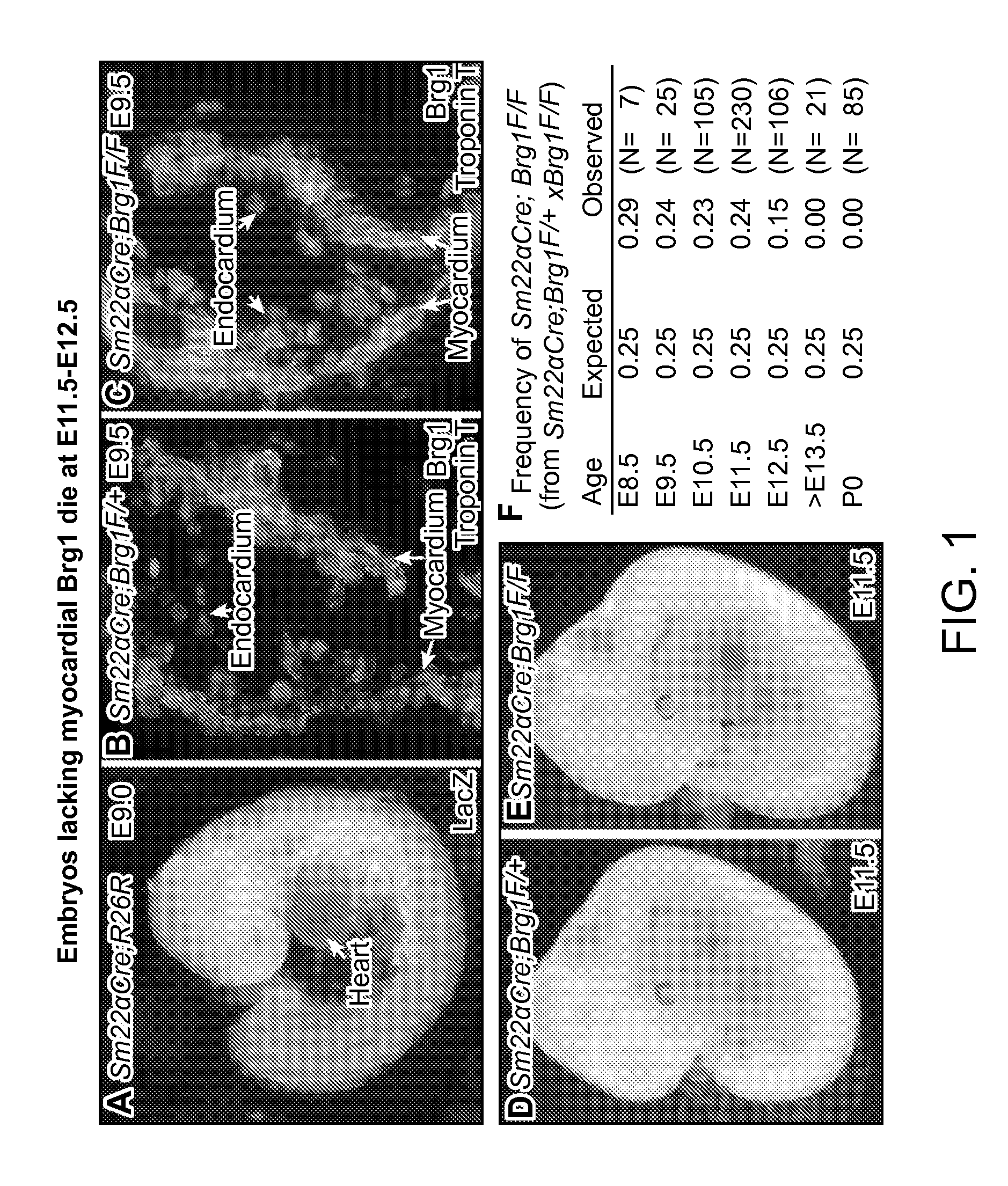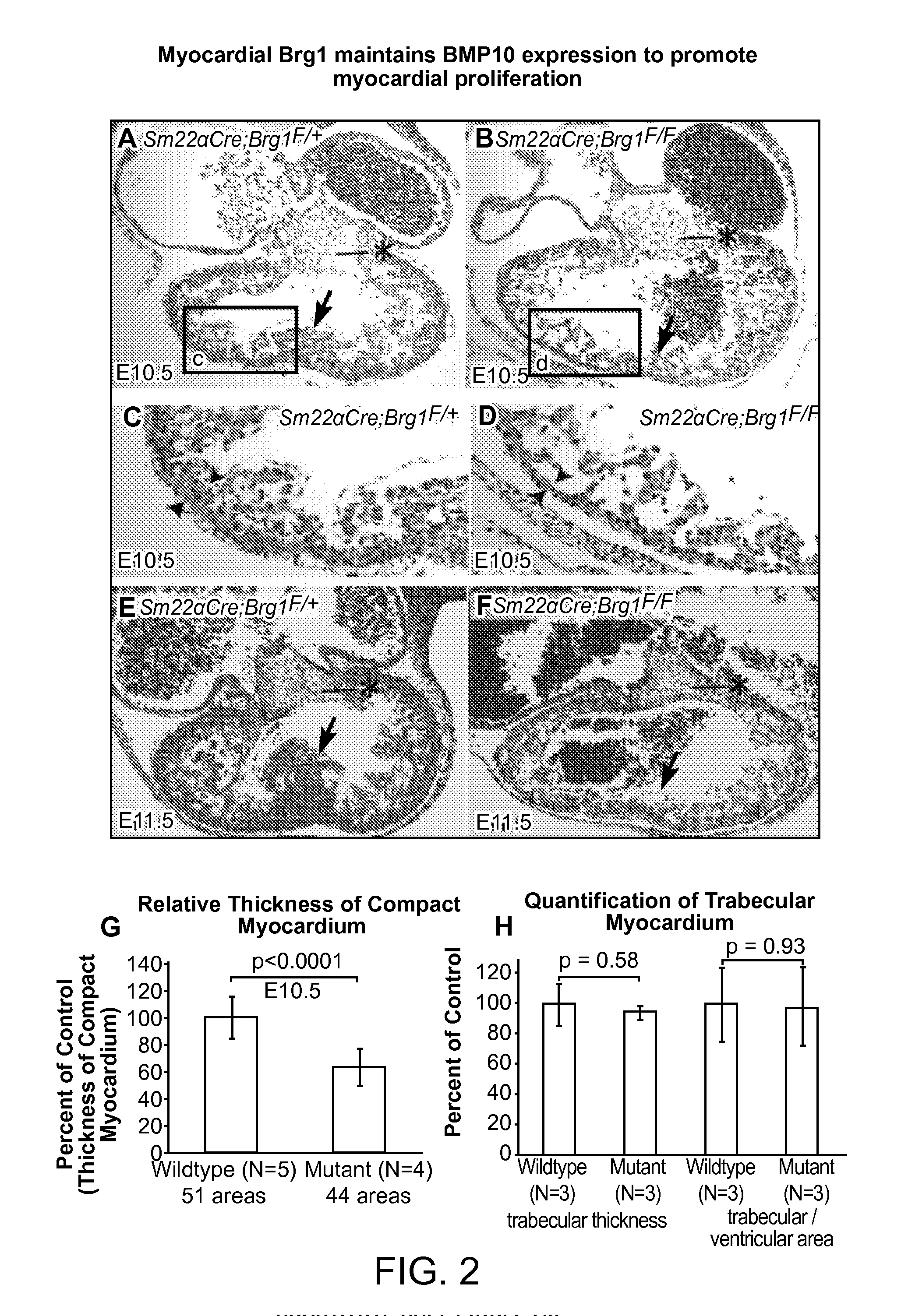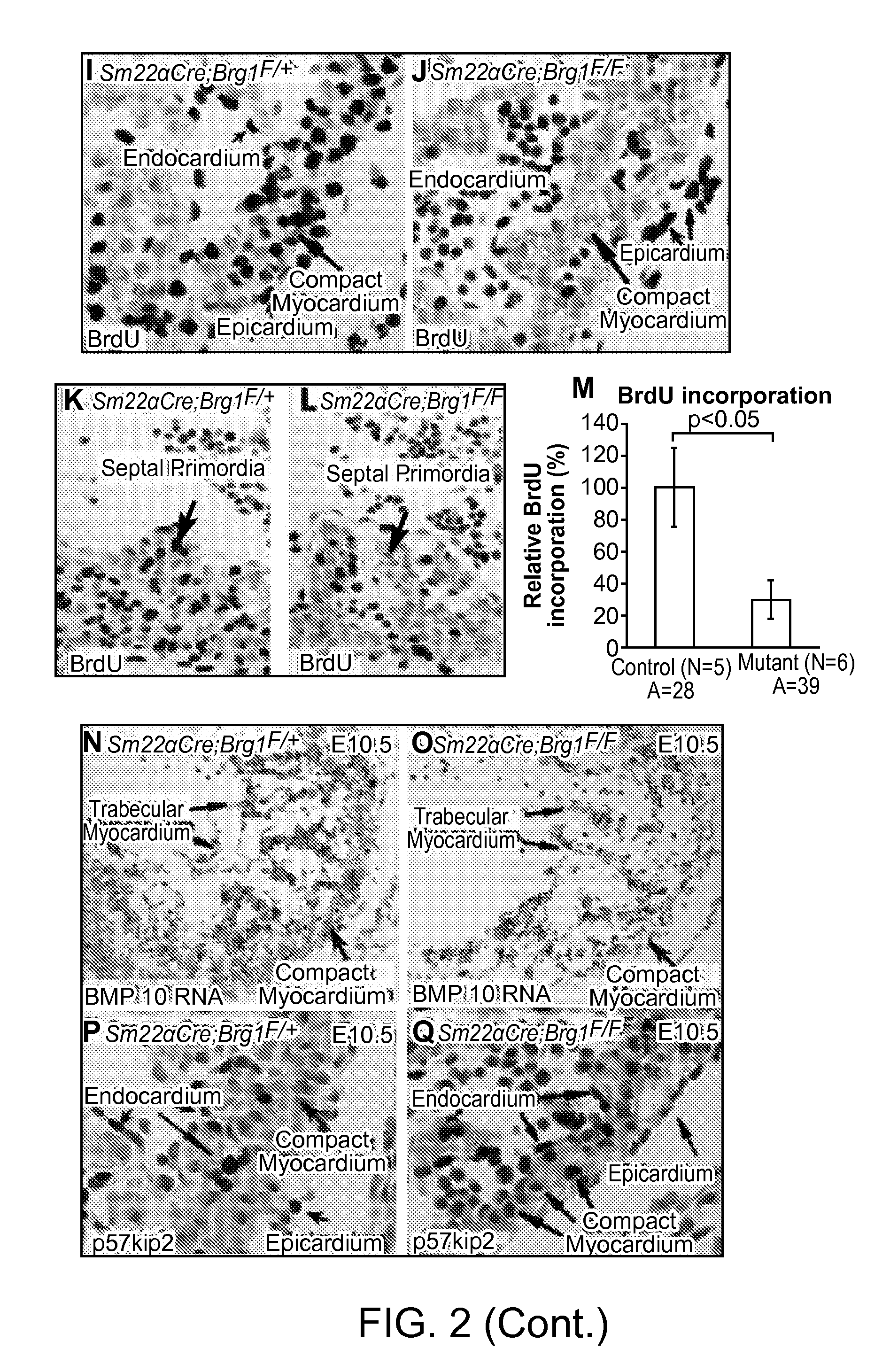Control of Cardiac Growth, Differentiation and Hypertrophy
a technology of differentiation and hypertrophy, applied in the field of control of cardiac growth, differentiation and hypertrophy, can solve the problems of heart failure, systolic and diastolic dysfunction of the heart, heart disease, etc., and achieve the effect of decreasing brg1 activity, increasing expression of brg1, and decreasing expression
- Summary
- Abstract
- Description
- Claims
- Application Information
AI Technical Summary
Benefits of technology
Problems solved by technology
Method used
Image
Examples
example 1
[0132]Cardiac hypertrophy and failure are characterized by transcriptional reprogramming and fetal gene activation. Stressed adult hearts undergo a shift of myosin heavy chain (MHC) from adult α-MHC to fetal β-MHC isoform in mice, resulting in decreased cardiac contractility. However, common mechanisms bridging these developmental and pathological processes are not well understood. Here we show that Brg1, a core component of BAF chromatin-remodeling complex, plays critical roles in regulating gene expression, tissue growth and differentiation in embryonic hearts and adult hearts under stress. In embryos, Brg1 promotes myocardial proliferation by maintaining BMP10 and suppressing a CDK inhibitor, p57kip2. In parallel, Brg1 / BAF preserves fetal differentiation by interacting with HDACs and PARP1 to repress α-MHC and activate β-MHC. Though highly expressed in embryos, Brg1 is turned off in adult myocardium. It is reactivated by cardiac stresses to complex with HDACs and PARP1, thus indu...
example 2
[0183]By immunostaining, we observed that Brg1 was expressed at a low level in endothelial cells of normal hearts (FIG. 14a). However, Brg1 level was highly up-regulated in cardiac endothelial cells within 14 days after transaortic constriction (TAC) (FIG. 14b), a procedure that stresses the heart and results in cardiac hypertrophy. Our findings therefore suggest that pressure overloading of the heart by TAC activates the expression of endothelial Brg1.
[0184]To test whether such endothelial activation of Brg1 is essential for cardiac hypertrophy, we first used a tamoxifen-dependent SclCreER mouse line to induce endothelial Brg1 deletion in mice that carried floxed alleles of Brg1 gene (Brg1F / F). By immunostaining, we showed that tamoxifen treatment for 5 days before the TAC surgery was sufficient to activate a β-galactosidase reporter (FIG. 14c, 14d) and disrupt endothelial Brg1 activation in stressed hearts (FIG. 14e, 14f). We then performed the TAC procedure to pressure-overload t...
PUM
 Login to View More
Login to View More Abstract
Description
Claims
Application Information
 Login to View More
Login to View More - R&D
- Intellectual Property
- Life Sciences
- Materials
- Tech Scout
- Unparalleled Data Quality
- Higher Quality Content
- 60% Fewer Hallucinations
Browse by: Latest US Patents, China's latest patents, Technical Efficacy Thesaurus, Application Domain, Technology Topic, Popular Technical Reports.
© 2025 PatSnap. All rights reserved.Legal|Privacy policy|Modern Slavery Act Transparency Statement|Sitemap|About US| Contact US: help@patsnap.com



